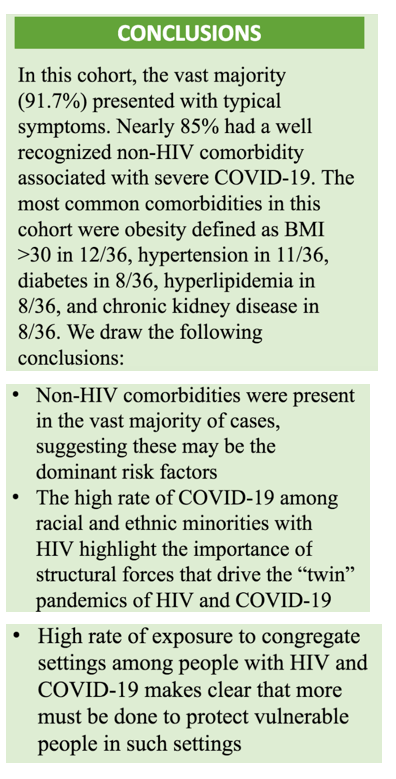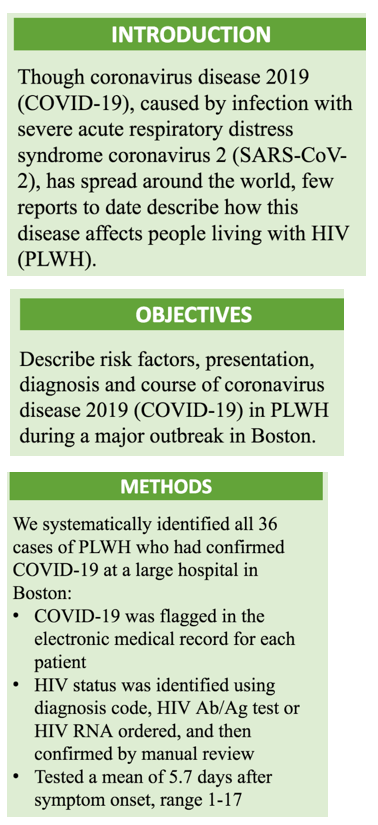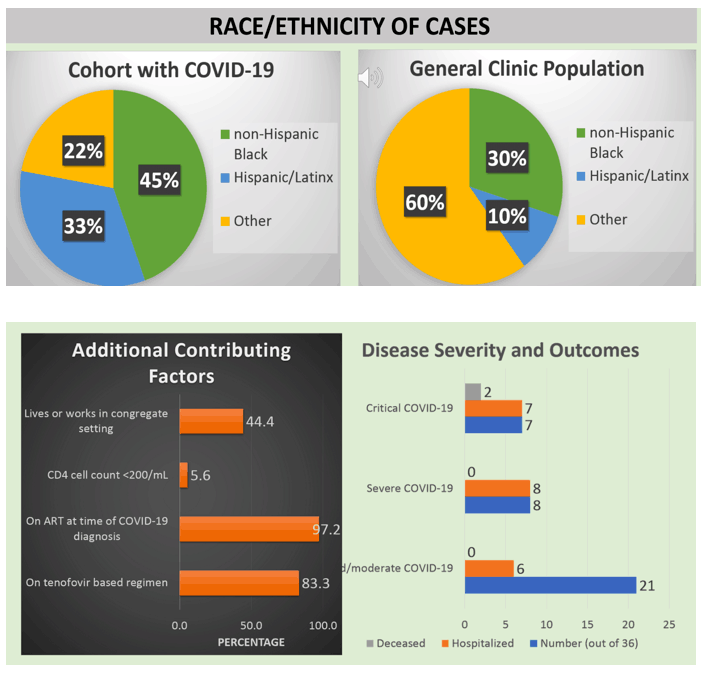 |
 |
 |
| |
Racial Disparities, Communal Living in
Boston COVID-19 Patients With HIV
|
| |
| |
AIDS 2020: 23rd International AIDS Conference Virtual, July 6-10, 2020
Mark Mascolini
Most early cases of COVID-19 among HIV patients at Boston's Massachusetts General Hospital were black or Hispanic in ratios exceeding those of the general clinic population [1]. A large majority of the group had a non-HIV comorbidity, and nearly half lived or worked in a group health setting, such as a skilled nursing facility, group home, or assisted-living facility.
Massachusetts General Hospital cares for a population that is about 40% black or Hispanic. The hospital has been a center for HIV care in Boston since the early days of the HIV epidemic. Mass General clinician-researchers analyzed early COVID-19 patients seen at the hospital who also had HIV infection.
Using electronic records, the Mass General team systematically identified all 36 people with HIV seen at the hospital with COVID-19 between March 3 and April 26, 2020. The group included 21 women and 15 men. Sixteen COVID-19/HIV patients (44.4%) were non-Hispanic black, compared with 30% of the general clinic population. Twelve of 36 coinfected people (33.3%) were Hispanic, compared with 10% of the general clinic population.
Thirty-five of 36 people with COVID-19 and HIV were taking antiretroviral therapy at the time of their COVID-19 diagnosis. Only 2 people had a CD4 count below 200.
These 36 people averaged 53.4 years in age, and those who required hospital admission were slightly older than those not admitted (55.9 versus 50 years). Men made up a slightly higher proportion of those admitted to the hospital than those not admitted (61.9% versus 53.3%).
Thirty-three of these 36 people (92%) had typical COVID-19 symptoms when they sought care. Nearly 85% of people with COVID-19 and HIV had a well-recognized non-HIV comorbidity associated with severe COVID-19, including obesity in 33%, hypertension in 31%, diabetes in 22%, hyperlipidemia in 22%, and chronic kidney disease in 22%.
Eight people admitted to the hospital (22% of 36) had severe COVID-19 requiring supplemental oxygen, and 7 (19% of 36) had critical disease requiring intensive care. Sixteen of these 36 individuals (44.4%) lived or worked in a group health setting such as a skilled nursing facility, group home, or assisted-living facility.
High prevalence of non-HIV comorbidities in COVID-19/HIV patients suggested to the Mass General team that such conditions may be dominant COVID-19 risk factors. The high proportion of racial/ethnic minorities in this study group (78% versus 40% in the general clinic population) underlined "the importance of structural forces that drive the twin pandemics of HIV and COVID-19." And the high rate of people living or working in group health facilities "makes clear that more must be done to protect vulnerable people in such settings."
Reference
1. Meyerowitz EA, Kim AY, Ard AL, et al. Racial disparities and high rates of exposure to congregate settings among a cohort of people living with HIV and COVID-19. AIDS 2020: 23rd International AIDS Conference Virtual. July 6-10, 2020. Abstract LBPEB13.




|
| |
|
 |
 |
|
|